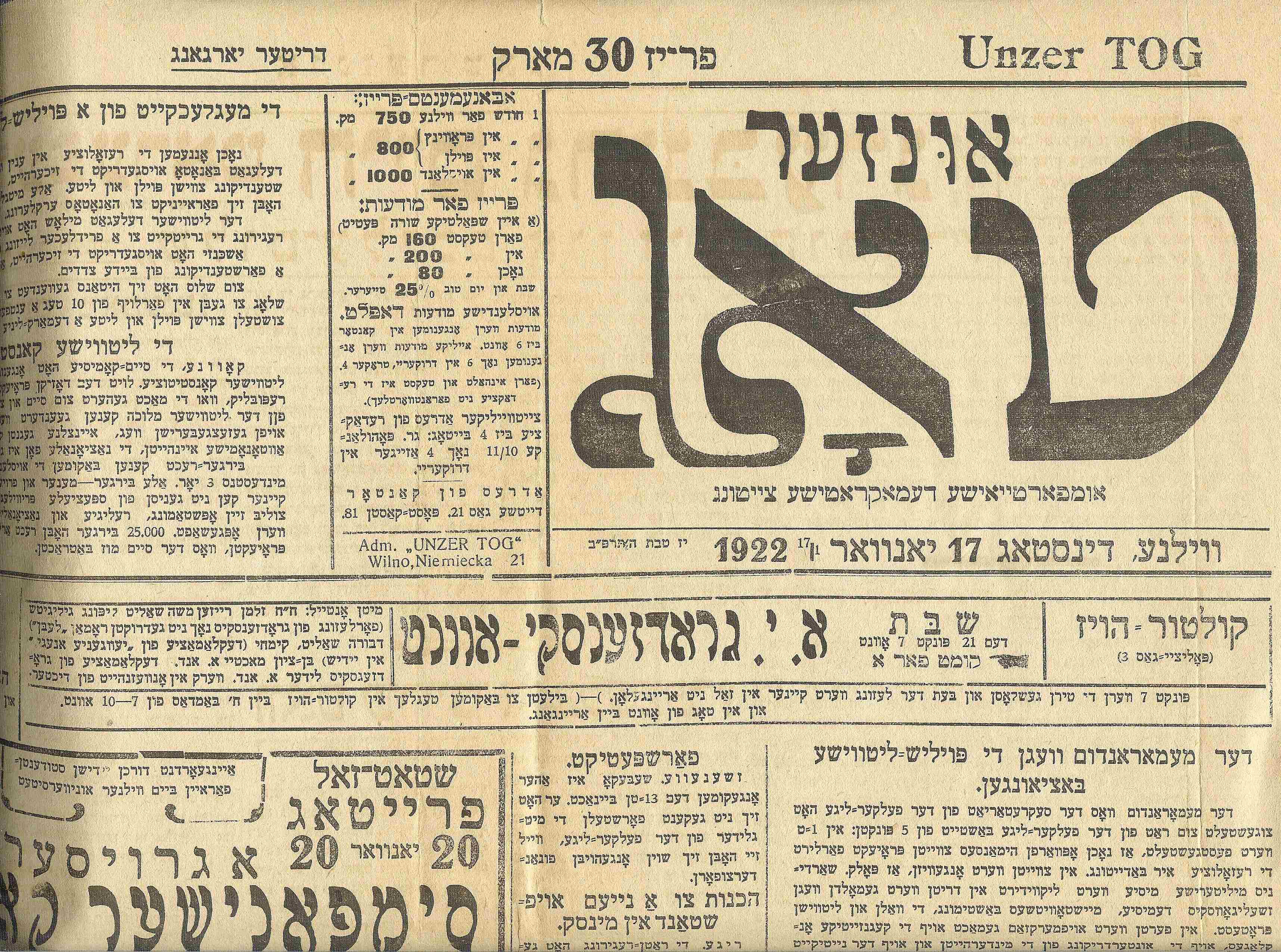by Dovid Katz
A 1922 headline in Zalmen Reyzen’s daily newspaper, the Vilna “Tog” (“Day” — issue of 17 Jan. 1922) announced a Saturday night event dedicated to the remarkable Vilna Yiddish writer Aaron Isaac (Arn-Yitskhok) Grodzenski (1891-1941), a secular Yiddish writer who was the nephew of the world famous rabbi Chaim-Oyzer Grodzenski (whose onetime home on Pylimo [Yiddish: Zaválne gas] still attracts visitors from around the world). Zalmen Reyzen, a famous Yiddish philologist, literary historian and editor, a co-founder of the Vilna Yivo in 1925, himself lived on Greys Pohulánke (now Basanavičiaus, where a bilingual Yiddish-Lithuanian plaque marks the site at no. 17).
Grodzenski’s most famous novel, “Lebn” (Life), that appeared in 1923, has become very rare, and is one of many forgotten works of old Jewish Vilna that deserve to be revived, studied and translated. Alas the trend now is for only the same works of the same tiny number of famous Vilna authors (usually just poets who survived into the ghetto period or beyond) to be studied with the rest all forgotten. This front-page 1922 announcement for a Grodzenski evening notes that excerpts from his (then-) unpublished “Lebn” would be read out at the evening. The novel masterfully sublimates, many critics thought, the author’s own journey to overcome personal disasters and channel one’s human energies into creativity. It might well be a major success in translation in the 21st century, and the Yiddish original should certainly return to the circles, courses and programs that read serious Yiddish literature.
[photo here]
A. I. Grodzenski suffered an injury to his speech organs as a baby that left him with a speech handicap. Then, during the evacuation to Russia in 1916, he lost both feet in a trolley car accident in Yekaterinislav (now: Dnepropetrovsk, Ukraine). He returned to Vilna where he put every ounce of his energy into his writing, until 1941, when he defied to the end the Nazis who rapidly sent him to his death at Ponár (Paneriai).
Grodzenski’s last work, a 1939 illustrated almanac about Jewish Vilna had better luck. It was photomechanically reprinted in New York in 1992 with some English materials added and with two new bilingual prefaces by two beloved “New York princes of Yiddish culture” Joseph Mlotek and Yoni Fain. Fain, who died in New York in late 2013, remembered I.A. Grodzenski very well…
One of today’s top experts on old Jewish Vilna, Vilnius’s Jewish community member Irina Guzenberg, an acclalimed author on the subject, has tentatively identified the address given for the House of Culture where the 21 January 1922 evening for A.I. Grodzenski was held (Politséy gas 3 [Policejskij per.]) as today’s Arklių 5.
More details (and links to sources and further reading) in our Virtual Yiddish Mini-Museum of Old Jewish Vilna (where comments and corrections are always welcome!):


